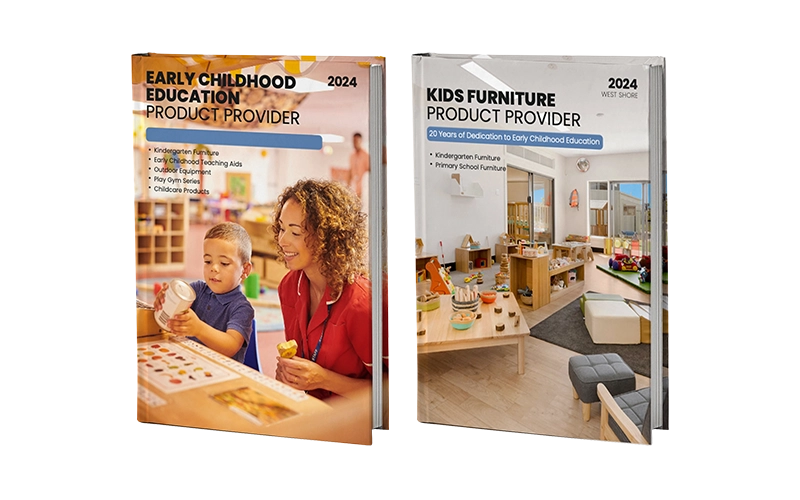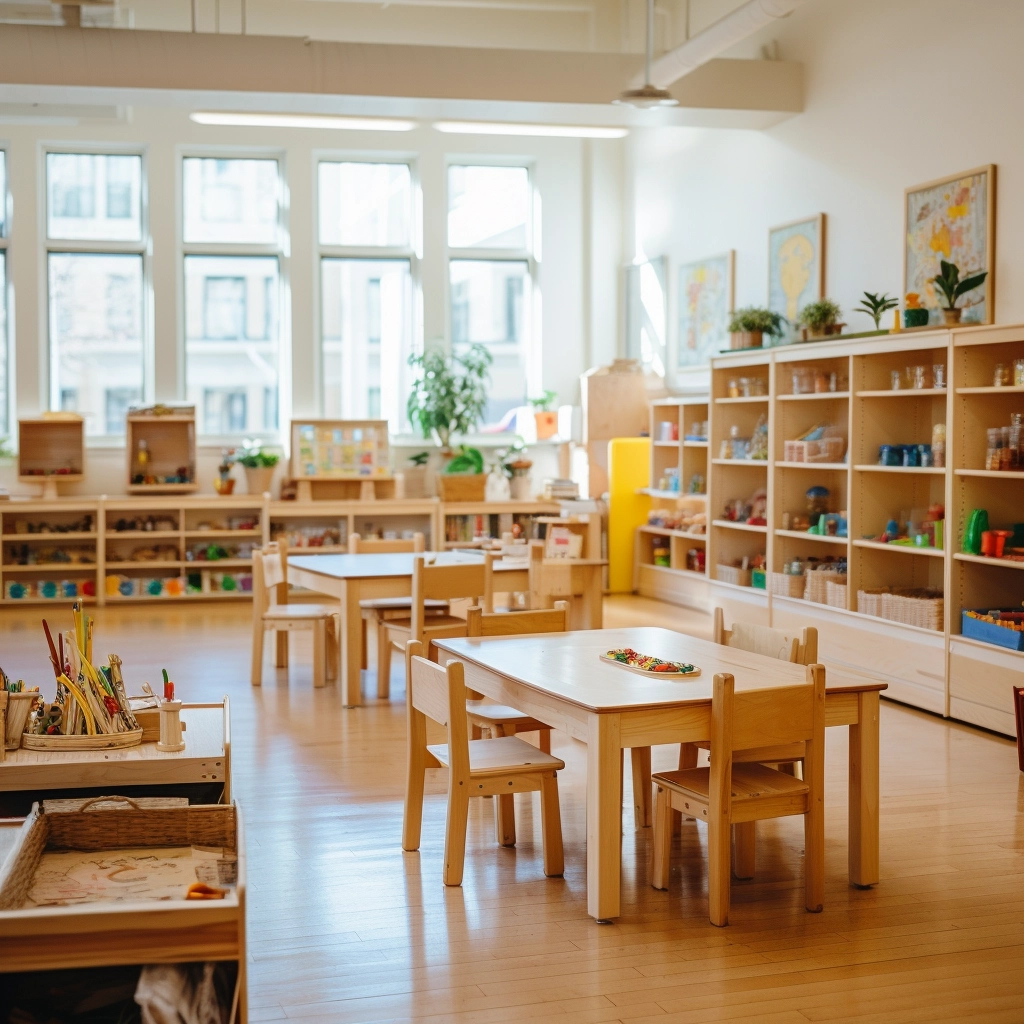子どもの「自分って何だろう?」という好奇心をどう刺激したらいいのか、考えたことはありませんか?楽しくインタラクティブなアクティビティを通して、子どもたちが自分らしさを発見し、自信をつけ、創造性を育むお手伝いができたらどうでしょうか?幼稚園の先生、保育士、あるいは保護者の方にとって、子どもの自己認識を促す適切なアクティビティを見つけるのは大変なことかもしれません。でもご安心ください。All About Meの幼稚園アクティビティがお手伝いします!これらの楽しいアクティビティは、自己表現を促し、自信を高めます。 感情的知性、すべての子どもに帰属意識を育みます。
「All About Me」アクティビティは、小さなお子様が 自己発見の旅子どもたちは、楽しく支え合いながら、工作、読み聞かせ、インタラクティブなゲームといった体験型アクティビティを通して、自分の性格、好きなこと、感情を探っていきます。これらのアクティビティは、単に楽しむだけでなく、自信や社会性を育み、自分自身をより深く理解することにもつながります。自分だけのアート作品の制作から、自分の気持ちを表現するゲームまで、これらのアクティビティを通して、子どもたちは周りの人たちと繋がりながら、個性を大切にすることができます。
では、このワクワク感を教室やご家庭でどのように活かせるでしょうか? 簡単に実践でき、お子様に驚くほど効果的な「All About Me」の幼児向けアクティビティを集めました。保育園、幼稚園、ご家庭など、どのお子様にも楽しく、年齢に合わせて楽しめるアクティビティです。これらのアクティビティは、お子様が自分自身を理解し、お友達や保護者の方々との有意義なつながりを育むのに役立ちます。楽しく、思いやりのあるこれらのアクティビティが、お子様の自己認識をどのように刺激するのか、ぜひ読み進めてください!

幼稚園の「All About Me」アクティビティの重要性
All About Meの幼稚園向けアクティビティは、子どもたちが自分のアイデンティティを理解し、自信を育み、基本的な社会性と情緒的スキルを身につける上で不可欠です。これらのアクティビティを通して、子どもたちは自己表現をし、他者と繋がり、肯定的な自己認識と健全な人間関係の基盤を築きます。これらのアクティビティがなぜ重要なのか、そして幼い学習者にどのようなメリットをもたらすのか、詳しく見ていきましょう。
感情的知性と自己認識の育成
「All About Me」アクティビティは、子どもたちに感情を理解し、表現するためのツールを与えます。子どもたちは、自分の感情、経験、好みを振り返ることで、自分の感情状態を認識します。こうした早期の感情認識は、共感力を育み、心の知能の基盤を築き、自分自身のニーズや他者のニーズをより深く理解できるようになります。
自信を築き、自己表現を促す
これらの活動は、子どもたちが芸術、物語、あるいは個人的な経験の共有を通して、創造的に個性を表現することを促します。未就学児は、自分たちの個性を称えることで自信を育み、大切にされていると感じます。子どもたちは、自分の考えや感情が大切であることを認識するにつれて、この自信が育まれ、社会的な場や新しい課題にもより快適に取り組めるようになるのです。
社会スキルと仲間とのつながりを強化する
「All About Me」アクティビティは、子どもたちが仲間とつながるのに最適です。子どもたちが自分の好きなこと、嫌いなこと、経験を共有すると、共通点が見つかります。これにより、コミュニケーションスキルを練習し、相手の話を聞く方法を学び、共通の興味と相互尊重に基づいた人間関係を築くことができます。これらのアクティビティは、教室内外でのポジティブな交流の強固な基盤を築きます。
個人の探求のための安全な環境を作る
これらの活動の最も重要な側面の一つは、子どもたちが自分自身を探求できる安全な空間を提供することです。支え合う環境の中で、子どもたちは批判を恐れることなく、自由に自分を表現することができます。この安心感によって、子どもたちは自分のアイデンティティ、創造性、そして感情を探求し、生涯にわたって役立つ肯定的な自己意識を育むことができます。

幼稚園のアクティビティ「All About Me」のための感覚ゲーム
お気に入りのアイテムが入った感覚ビン
導入感覚ビンは、子どもたちの感覚を刺激し、好きなものや周囲の世界とどのように関わっているかを発見するのに最適な方法です。このアクティビティは、触覚的な探究心を育み、子どもの興味を表す身近なアイテムを通して自己表現を促します。
材料:
- 大きな容器またはビン
- 子どもの好きなものに関するアイテム(例: 知育玩具、カラフルなボタン、生地見本、好きな色、動物、趣味に関連した物など)
セットアップ方法:
- 柔らかい布地、凹凸のある質感、または子供の好きな色や興味を表すカラフルなボタンなどの感覚刺激アイテムを箱に詰めます。
- 子どもたちが座って探索できる快適な場所に感覚ビンを置きます。
- 子どもたちにゴミ箱の中を掘り返して、見つけたものについて話し合うように促しましょう。「ゴミ箱の中で一番好きなものは何ですか?なぜ好きなの?」といった質問をしてみましょう。
- 子どもたちに手を使ってそれぞれの質感を探検させ、感じたこと、見たこと、触ったことを説明できるようにしてあげましょう。

感触テクスチャマット
導入このアクティビティは、子どもたちが触覚を通して様々な質感を探求し、身体感覚と感情を結びつけることで自己認識を育むのに役立ちます。感覚処理能力と感情表現の語彙力を高めるのに最適な方法です。
材料:
- さまざまな質感の素材(例:サンドペーパー、綿布、フェルト、ゴム)
- 段ボールまたは発泡スチロールシート
- のり
セットアップ方法:
- 段ボールまたは発泡スチロールのシートを、それぞれのテクスチャに合わせて扱いやすい正方形に切ります。
- それぞれの正方形に、異なる質感の素材を接着します。質感は、ざらざらしたもの、柔らかいもの、凹凸のあるもの、滑らかなものなど、多様であるようにしてください。
- 子どもたちが快適に探索できる場所にマットを敷きます。
- 子どもたちがそれぞれの質感に触れたら、どんな感触か説明してもらいましょう。「柔らかい?それともざらざらしてる?」「どんな感じ?」といった質問は、感情を表す語彙を増やすのに役立ちます。
「物体を当てよう」感覚ボックス
導入この推測ゲームは、子どもたちが触覚を使って物を識別する楽しい方法で、好奇心と自己発見を促します。また、子どもたちが自分の気持ちや考えを言葉で表現することを促します。
材料:
- 蓋付きの小さな箱または容器
- さまざまな小さな物体(例:おもちゃの車、柔らかいぬいぐるみ、小さなボール、質感のある物)
セットアップ方法:
- 子どもたちに見えないように、箱の中にさまざまな小さな物を入れます。
- 子どもたちに、箱の中を見ずに触って、触った感じに基づいてそれぞれの物が何であるかを推測してもらいます。
- 推測しながら、「柔らかい」「硬い」「滑らかだ」など、感触を説明するように促します。
- 推測するたびに、その物体を明らかにし、感情や興味に関連付けて、その感触について話し合います(例:「このぬいぐるみはペットを思い出させますか?」)。
All About Me の幼稚園向け読書・ライティングアクティビティ
私のすべてについての本
導入: 自分だけの「All About Me」ブックを作ることは、未就学児が物語を書いたりイラストを描いたりする楽しい方法です。これは、幼児期の読み書き能力を育みながら、自分のアイデンティティ、興味、家族について考えるのに役立ちます。
材料:
- 白紙またはノート
- マーカー、クレヨン、または色鉛筆
- ステッカーや装飾品(オプション)
セットアップ方法:
- それぞれの子供に白紙の紙または小さなノートを渡します。
- 絵を描いたり、自分自身について短い文章やフレーズを書いたりできるように指導しましょう。例えば、家族、好きな食べ物、趣味などの絵を描き、「犬と遊ぶのが好きです」や「好きな色は青です」といった文章を添えるとよいでしょう。
- 子どもたちに仲間や家族と本を共有するよう奨励し、コミュニケーション能力と自己表現への誇りを育みます。
- 自己認識を促進し、個性を讃えるために、教室に本を展示します。

自己表現ストーリーテリング
導入ストーリーテリング活動は、未就学児が自分の考えやアイデアを明確に表現することを促し、感情や経験を理解するのに役立ちます。この活動は、子どもたちが話すこと、聞くこと、そして他人の話に耳を傾けることの練習に最適な機会となります。
材料:
- 簡単な絵カードや絵本(例:木、ペット、遊び場)
- 紙とクレヨン(絵を描く場合はオプション)
セットアップ方法:
- さまざまなシナリオや物体を描いた絵カードやイラストを子供たちに見せます。
- 子どもたちに、絵に基づいて「公園に行ってブランコで遊びました」のような短い物語や文章を作ってもらいます。
- 子どもたちが話しながら、「公園に行ったとき、どんな気持ちでしたか?」や「その日は何が嬉しかったですか?」などのガイドとなる質問をしましょう。
- オプションで、子どもたちはストーリーに添える絵を描くことができ、自分の感情や経験を視覚化するのに役立ちます。
「私のお気に入り」ジャーナル
導入この日記活動を通して、子どもたちは書くことや描くことを通して自分を表現することができます。好きなものに焦点を当てることで、自分の好みを明確に表現し、早期のライティングスキルを身につけることができます。
材料:
- 空白のノートまたは紙
- マーカー、クレヨン、ステッカー
- さまざまな好きなもの(食べ物、動物、アクティビティなど)の写真の例
セットアップ方法:
- それぞれの子供に空白の日記帳または紙を 1 枚渡します。
- 好きなもの(好きな動物、食べ物、アクティビティなど)について絵を描いたり書いたりするように頼んでみましょう。
- 絵を描き終えたら、「なぜこれが好きなの?」「あなたにとって何が特別なの?」などの質問に答えて、選んだ理由を説明するように促します。
- 社会的交流と反省を促進するために、子供たちが日記の内容をクラスや家族と共有できるようにします。
幼稚園児向け算数アクティビティ「All About Me」
自分についてのすべてグラフ
導入: 好みに合わせてグラフを作ることは、数え方、分類、データの比較といった基本的な数学の概念を楽しく学ぶ方法です。また、子どもたちは自分自身やクラスメイトについて学ぶこともできます。
材料:
- 大きな紙またはポスターボード
- マーカーまたはクレヨン
- さまざまなカテゴリを表すステッカーや絵(例:好きな色、動物、食べ物)
セットアップ方法:
- ポスターボードに大きなグラフを作成し、上部に「好きな色」「好きな動物」「好きな食べ物」などのカテゴリを記入します。
- 各子供に各カテゴリーで好きな選択肢を選んでもらい、対応する列にステッカーを貼るか記号を描くように指示します。
- 子どもたちが全員参加したら、シールの数を数えて、「どの色が一番人気?」「猫が好きな子どもは何人いる?」など、結果について話し合います。
- このアクティビティは、子どもたちが自分の好みを振り返りながら、数えたり、分類したり、比較したりする練習をするのに役立ちます。

身の回り品の形状認識
導入図形認識は、幼児期の算数スキルとして非常に効果的で、個人的な発見にもつながります。子どもたちにとって意味のあるものを使うことで、このアクティビティは算数を子どもたちの個人的な生活と結びつけます。
材料:
- さまざまな形の物体(例:おもちゃ、皿、ブロック)
- 画用紙またはチャート紙
- マーカーまたはクレヨン
セットアップ方法:
- 異なる形状のアイテム(丸いボール、四角いブロック、三角形のおもちゃなど)を集めます。
- 子どもたちにそれぞれの物体を見せて、その形を識別するように頼みます。
- 形が特定できたら、子どもたちに部屋の周りや家の中で同じ形に似ているものを探すように頼みます。
- 子どもたちに形を描いてもらい、その形が自分の好きなものとどう関係しているか話し合ってもらいます。「一番好きな四角いものは何ですか?」
成長を測る
導入このアクティビティは、未就学児が時間の経過とともにどのように成長し、変化していくかについて考えることを促します。身長を測ることで、視覚的かつ数学的に、個人の成長と自己認識を理解することができます。
材料:
- 身長計またはメジャー
- マーカーまたはステッカー
- 絵を描くための紙とクレヨン
セットアップ方法:
- 壁に身長表を貼るか、メジャーを使って子供たちの身長を測ります。
- それぞれの子供の身長を測り、チャートに測定値を記入します。
- 子どもたちに、自分の身長を友達の子と比べ、成長について話し合ってもらいます。
- オプションとして、子どもたちは身長表の横に自分の絵を描いて、成長を視覚化することができます。
自分についての工作アクティビティ
自画像コラージュ
導入自画像コラージュを作ることは、子どもたちが自分のイメージを探求するための楽しくインタラクティブな方法です。練習しながら、自分のアイデンティティを視覚的に表現することができます。 細かい運動能力このプロセスを通して、子どもたちは自分の外見や自分自身をどのように見ているかについて考えます。これは自己認識を育む優れた方法です。
材料:
- 色画用紙
- スティックのり
- はさみ(監督付き)
- 雑誌や印刷された写真
- マーカーまたはクレヨン
セットアップ方法:
- コラージュのベースとして、各子供に色付きの画用紙を配ります。
- 子どもたちに雑誌や印刷された絵を渡し、髪の毛や目、服装など、自分の特徴を表す絵や形を切り取るように促します。
- 子どもたちにはさみを使って形や絵を切り抜き、それを紙に貼り付けて自画像を作ってもらいます。
- マーカーやクレヨンを使って、顔の特徴、お気に入りの服、自分を象徴するアクセサリーなどを描き加え、子供たちに肖像画を仕上げさせます。
- その後、子どもたちに自分の自画像をグループで共有させ、何が自分独自のものであるかについて話し合ってもらいます。

私のすべて 手形アート
導入手形アートは、子どもたちが工作に積極的に参加しながら、自分自身のアイデンティティを表現するのに最適な方法です。子どもたちは、自分の手形を創造的な芸術作品にすることで、作品への誇りを育みます。このアクティビティは、自己表現と創造性のつながりを育むのにも役立ちます。
材料:
- 洗えるペイント
- 絵筆またはスポンジ
- 大きな紙または画用紙
- マーカーまたはクレヨン
- 掃除用ウェットティッシュ
セットアップ方法:
- 表面を塗料から保護するために、テーブルを紙またはプラスチックシートで覆ってエリアを準備します。
- 簡単に取り出せるように、洗えるペイントを皿やパレットに注ぎます。
- 子どもたちに絵の具に手を浸してもらい、紙に優しく押し付けて手形をつけてもらいます。
- 手形が乾いたら、子どもたちはマーカーやクレヨンを使って髪の毛や服、アクセサリーなどの特徴を描き加えて、手形を人物に変えることができます。
- 子どもたちは、自分の名前や好きなものを紙に書いて、作品を自分らしくすることもできます。
- 完成したら、子どもたちに自分の手形アートを他の人と共有させ、何が特別であるかを説明してもらいます。
私の家系図クラフト
導入「マイ・ファミリー・ツリー・クラフト」は、子どもたちが家族の構成員について、そして家族構成における自分の位置づけについて学ぶのに役立ちます。子どもたちが自分たちの関係性や家族の力学について考えながら、つながりや帰属意識について学ぶことができる、意義深いクラフトです。
材料:
- 大きな紙またはポスターボード
- マーカー、クレヨン、または色鉛筆
- 家族写真(オプション)
- スティックのり
- 緑色の画用紙(葉っぱ用)
- はさみ
セットアップ方法:
- ポスターボードに大きな木の幹と枝を描いたり、子供たちにマーカーで描かせたりします。
- 緑の画用紙から葉っぱの形を切り取ります。これは家族を表します。
- 子どもたちに、葉っぱに家族の絵を描いたり、家族の写真(あれば)を貼ったりしてもらいましょう。家族それぞれの名前や特別なことを書き加えるのも良いでしょう。
- 子どもたちは、花や鳥、あるいは家族を表すその他のシンボルを描いてツリーを飾ることができます。
- 工作が完成したら、子どもたちは自分の家系図について話し、家族に誰がいるのかをグループで共有します。このアクティビティは、自己認識、帰属意識、そして家族への誇りを育みます。
幼稚園児向けの「All About Me」の本
子どもたちに自己認識を教える最良の方法の一つは、物語を通してです。「All About Me」という幼児向けの絵本は、子どもたちが自分自身、家族、そして自分の感情を理解するのに最適です。 カラーモンスター1 または 私は十分だ2 感情、アイデンティティ、優しさに焦点を当てた、シンプルで共感できる物語を提供しています。これらの絵本を読み聞かせることは、子どもたちが自分の経験、感情、考えについて話し合う素晴らしい機会となります。子どもたちは登場人物に自分自身を投影し、物語に共感することで、内省と共感を育みます。また、子どもたちに「All About Me」の本を自分で作らせることもできます。これは、教室での楽しいアクティビティや、家族で共有できる家庭学習として最適です。
- 《カラーモンスター》は、美しいイラストが描かれた絵本で、幼い子どもたちに感情の概念を視覚的にも楽しくインタラクティブな方法で紹介します。物語は、さまざまな感情を抱くけれどその理由がわからない生き物「カラーモンスター」を主人公としています。小さな女の子の助けを借りて、カラーモンスターはそれぞれの感情を異なる色と関連付けることで、自分の感情を認識することを学びます。 ↩︎
- 《私は十分だ》は、美しい文章とイラストで彩られた絵本で、自己愛、自信、そして優しさの大切さを育むことに焦点を当てています。シンプルながらも力強い言葉を通して、子どもたちはありのままの自分で十分であり、自分らしさと価値を受け入れるべきだと教えてくれます。詩的な物語と、力強いメッセージを生き生きと伝える鮮やかなイラストが魅力です。 ↩︎
幼稚園のポスター「All About Me」
このアクティビティは、子どもたちが自分自身の興味、好み、性格などについて、楽しくクリエイティブに情報を共有できる方法です。子どもたちにポスターをデザインさせたり、以下のセクションを含む簡単なワークシートテンプレートを使ったりすることもできます。
- 名称: 誰もが知ることができるように、お子様のフルネームを入力します。
- 好きな色: 彼らが好む色と、視覚的に自分を表現する方法について学びます。
- 好きな動物: 子どもたちの好きなことや、つながりを感じている動物について楽しく話す方法です。
- 好きな食べ物: 子どもたちが自分の好みや食べ物の好みについて話し合う機会。
- 趣味: 子供がどんな活動や娯楽を最も楽しんでいるかを知ること。
- 家族: お子様の家族の写真や説明を追加するためのスペースです。
- 私が好きなこと: 子どもたちが楽しんでいる活動やスポーツをリストアップできる場所。
- 私を特別なものにするもの: 子どもが、自分をユニークにしていると感じるものを共有するための反省セクションです。

子どもたちは、自分だけの「私について」ポスターを作ることで、自己表現を練習し、視覚的にも実際に触れることで、個性を讃えることができます。これは、自己認識を育み、仲間同士の理解を深めるのに最適な教室活動です。
私についての質問
思慮深い質問をすることは、未就学児が自分自身について、何を楽しんでいるのか、そして周囲の世界とどのように関わっているのかを考えるための最良の方法の一つです。「私について」のアクティビティは、子どもたちが自分の感情、興味、個人的な経験を言葉で表現するのを助け、より深い自己認識を促します。これらの質問は、教室でも家庭でも会話のきっかけとなり、子どもたちが自分の好きな色から将来の夢まで、自分のアイデンティティのさまざまな側面を探求する機会となります。
効果的な質問の例:
- あなたの好きな色は何ですか?また、なぜそれが好きなのですか?
この簡単な質問は、子どもたちが感情や好みを色と結び付け、自分の好みについて洞察を深めるのに役立ちます。 - 家族と一緒に何をするのが好きですか?
子どもたちに家族の経験について話すように促すことで、子どもたちは関係性や家族の力学について考える機会を得ることができ、それは帰属意識を育むために不可欠です。 - 今日はどんな気分ですか?
この質問をすることで感情的な認識が促進され、子どもたちが自分の現在の気分とその理由を理解するのに役立ちます。 - あなたを幸せにするものは何ですか?
何が自分を喜ばせるのかを特定することで、子どもたちは自分の興味や情熱をより意識するようになり、前向きな自己表現に貢献します。 - 学校や保育園で一番好きなことは何ですか?
この質問は、子どもたちが周囲の環境とつながり、最も楽しんでいる活動を発見するのに役立ち、子どもたちの好みや学習スタイルについての洞察を提供します。 - あなたが本当に得意なことは何ですか?
子どもたちに自分の強みについて話すように促すことで、子どもたちの自信が高まり、自己肯定感が高まります。 - あなたの好きなおもちゃやゲームは何ですか?
この質問により、子どもたちは自分の遊びの好みを振り返り、自分にとって最も意味のある活動やおもちゃを共有することができます。 - もしどんな動物でもなれるとしたら、どの動物になりたいですか? また、その理由は?
楽しく想像力豊かな質問で、創造性を刺激し、子供たちが遊び心のある象徴的な方法で自分自身の認識を表現できるようにします。
これらの質問の使い方:
- グループディスカッション毎日質問をし、子どもたちにグループで答えを共有してもらいましょう。これは社会的な交流を促し、子どもたちが仲間の経験から学ぶのに役立ちます。
- 一対一の設定で: 個別の会話中にこれらの質問を使用して、子どもたちが心を開いて自分の気持ちを振り返るのを助けます。
- 工作や日記の活動で: 子どもたちに、質問に答えるように書かせたり、答えを表す絵を描かせたりします。
定期的に「私について」の質問を取り入れることで、子どもたちは 子どもたちが自分のアイデンティティについて考え、感情的知性を高めながら、価値を認められ、理解されていると感じられるようにします。
学習意欲を高める空間をデザインする準備はできていますか? 教室のニーズに合わせてカスタマイズされた家具ソリューションを作成するには、当社にご相談ください。
自分についてのアイデア
「All About Me Preschool Activities」をカリキュラムや家庭生活に取り入れることは、幼い子どもたちが自分のアイデンティティを探り、心の知能を高め、自信を育む上で非常に効果的な方法です。創作工作、振り返り日記、感覚遊び、インタラクティブなゲームなど、これらのアクティビティは、子どもたちが自分自身を理解し、表現することを促します。単に楽しいだけでなく、これらのエクササイズは、自己認識、共感、コミュニケーション、そして社会とのつながりといった、幼児期の発達に不可欠なスキルを育みます。
All About Me Preschool Activitiesをサポートする環境を整えるには、デザイン性の高い家具や教育リソースといった適切なツールが大きな効果を発揮します。子どもたちが心地よく、自分自身や周りの世界を見つめ直す活動に積極的に取り組めるような空間づくりが不可欠です。 ウェストショア家具は、幼い学習者のために質の高い、安全で、刺激的な環境を創造することに尽力していることで知られており、子どもたちの身体的および精神的な発達を育む空間を提供することの重要性を理解しています。適切な家具と教室のレイアウトがあれば、子どもたちは自己表現と成長を促す活動に積極的に参加し、幼稚園での経験をさらに豊かにすることができます。






